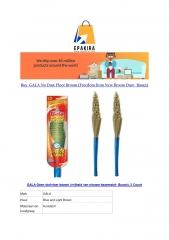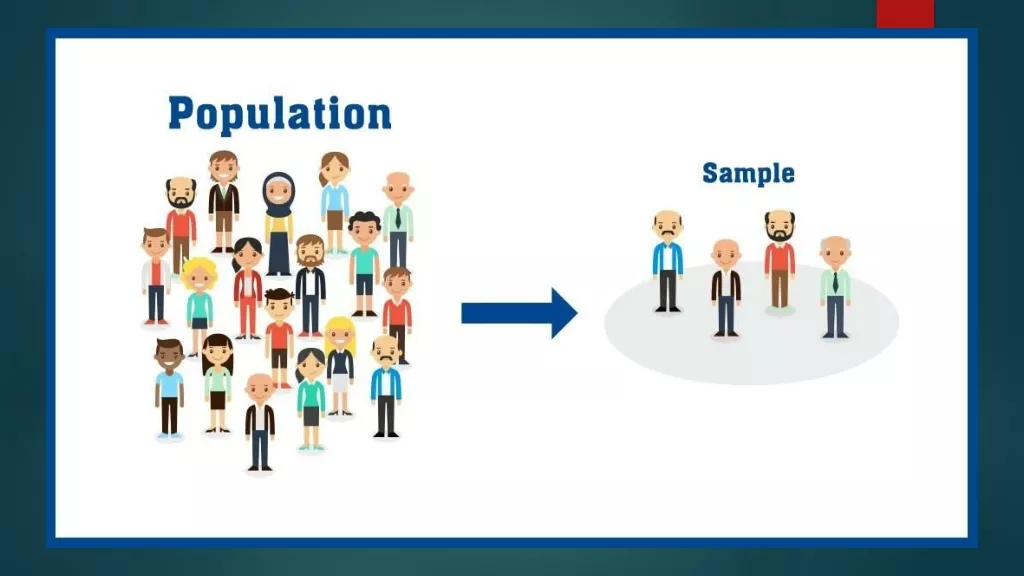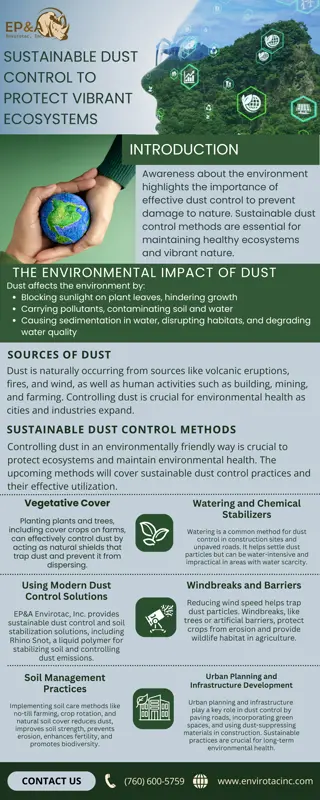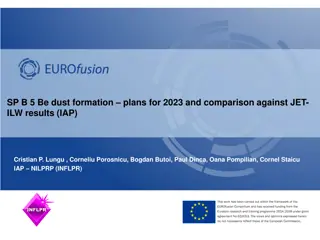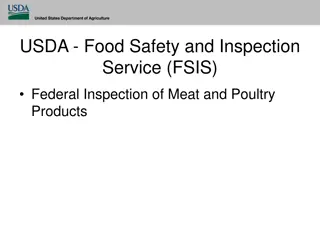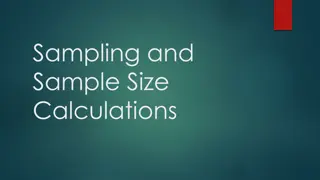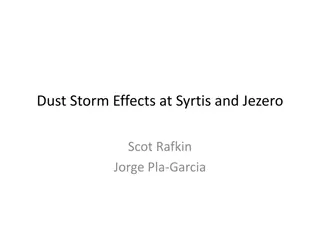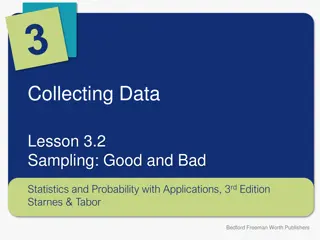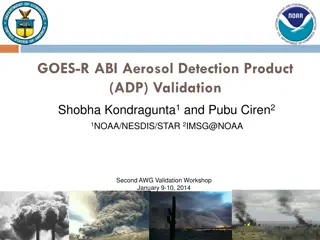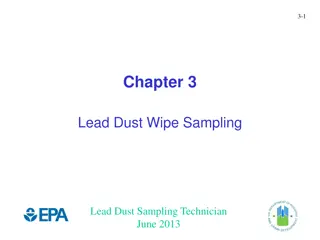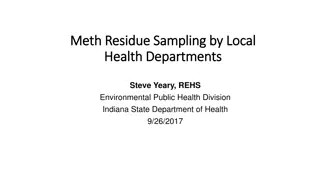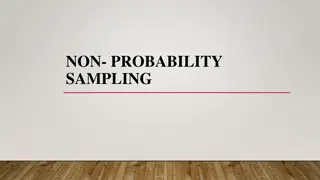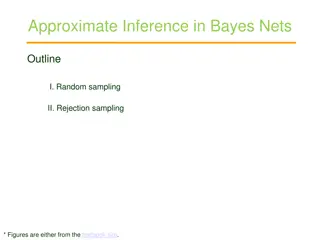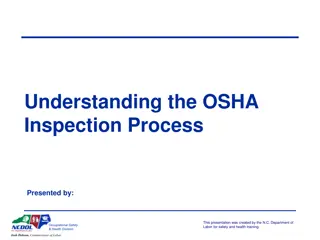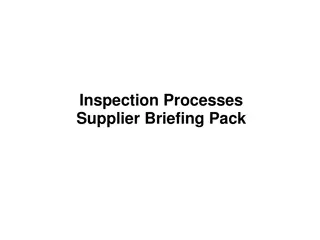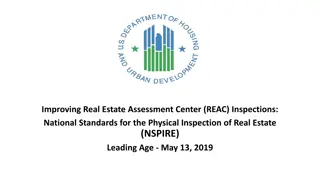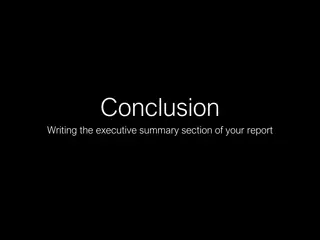Visual Inspection for Lead Dust Sampling
Visual inspection plays a crucial role in lead dust sampling to identify potential hazards such as deteriorated paint, visible dust, and debris. Both EPA and HUD regulations require a thorough visual inspection before conducting any clearance testing. This process ensures the safety of the work area and determines if further action is needed to eliminate hazards before sampling. Exterior areas must also be inspected if renovation activities have disturbed painted surfaces or if openings to the exterior were not properly sealed during interior work.
Download Presentation

Please find below an Image/Link to download the presentation.
The content on the website is provided AS IS for your information and personal use only. It may not be sold, licensed, or shared on other websites without obtaining consent from the author. Download presentation by click this link. If you encounter any issues during the download, it is possible that the publisher has removed the file from their server.
E N D
Presentation Transcript
2-1 Chapter 2 Visual Inspection Lead Dust Sampling Technician June 2013
2-2 Objectives Learn what a visual inspection is Learn the steps for performing a visual inspection under both EPA s and HUD s regulations Learn when to look for deteriorated paint, visible dust or debris, and paint chips Record results on a visual inspection form Lead Dust Sampling Technician June 2013
2-3 Visual Inspection Under both EPA s and HUD s rules, visual inspection is the first step in the clearance process. The visual inspection determines whether the unit/work area (interior and exterior) is clear of visible conditions that can result in exposure to lead-based paint hazards: Chips or debris Visible dust Lead Dust Sampling Technician June 2013
2-4 Visual Inspection EPA RRP Lead Dust Clearance Testing At the conclusion of the renovation, the certified renovator may have conducted a visual inspection to look for paint chips, dust, and debris. The LDST must conduct a separate visual inspection of the work area to ensure that the area is free of debris and ready for lead dust sampling. If any paint chips, dust, or debris are found, the renovation firm should re-clean these areas before the dust sampling technician begins to collect dust wipe samples. Lead Dust Sampling Technician June 2013
2-5 Visual Inspection HUD LSHR HUD s rule requires identification of deteriorated paint Whole-unit clearance generally required unless worksite-only clearance is allowed. Do not perform lead dust clearance testing if unit/work area does not pass visual inspection. If deteriorated paint, dust, or debris is found, it must be eliminated before dust sampling may begin. See Attachment 2-A and 2-B Lead Dust Sampling Technician June 2013
2-6 Visual Inspection HUD LSHR Inspect exterior area if: Exterior painted surfaces have been disturbed by renovation activity Openings to exterior were not sealed during interior work Inspect ground and outdoor living areas close to affected surfaces Visible dust or debris must be removed Deteriorated paint must be eliminated Dust sampling is not performed for exterior work Lead Dust Sampling Technician June 2013
2-7 Exterior Debris Lead Dust Sampling Technician June 2013
2-8 Visual Inspection HUD LSHR Identify any paint that is not intact: Chipping Peeling Chalking Cracking Holes, moisture, and friction damage Hairline cracks and nail holes are not considered deteriorated paint. Lead Dust Sampling Technician June 2013
2-9 Visual Inspection HUD LSHR Dust Dust you can see Debris Pieces of wood, bits of plaster, and various other building pieces covered in paint Paint chips Small pieces of paint Lead Dust Sampling Technician June 2013
2-10 Visual Inspection HUD LSHR Chipping Paint Lead Dust Sampling Technician June 2013
2-11 Visual Inspection HUD LSHR Holes in wall Lead Dust Sampling Technician June 2013
2-12 Visual Inspection HUD LSHR Deteriorated Paint Lead Dust Sampling Technician June 2013
2-13 Visual Inspection HUD LSHR Cracking Paint Lead Dust Sampling Technician June 2013
2-14 Visual Inspection HUD LSHR Moisture Damage Lead Dust Sampling Technician June 2013
2-15 Visual Inspection HUD LSHR Friction Damage Lead Dust Sampling Technician June 2013
2-16 Visual Inspection HUD LSHR Be precise about locations. Write down results as you go. Write down other information, indicating source. See sample visual inspection form. (Attachment 2-B) Lead Dust Sampling Technician June 2013
2-17 Review Visual inspection is the first step to clearance. EPA s visual inspection determines that the area is free of dust and debris before dust clearance testing can begin. HUD s visual inspection also checks for deteriorated paint and generally covers the entire unit unless worksite-only clearance is allowed. Visual inspection as part of clearance is the responsibility of the dust sampling technician. Recordkeeping should be methodical. Lead Dust Sampling Technician June 2013

 undefined
undefined


 undefined
undefined



